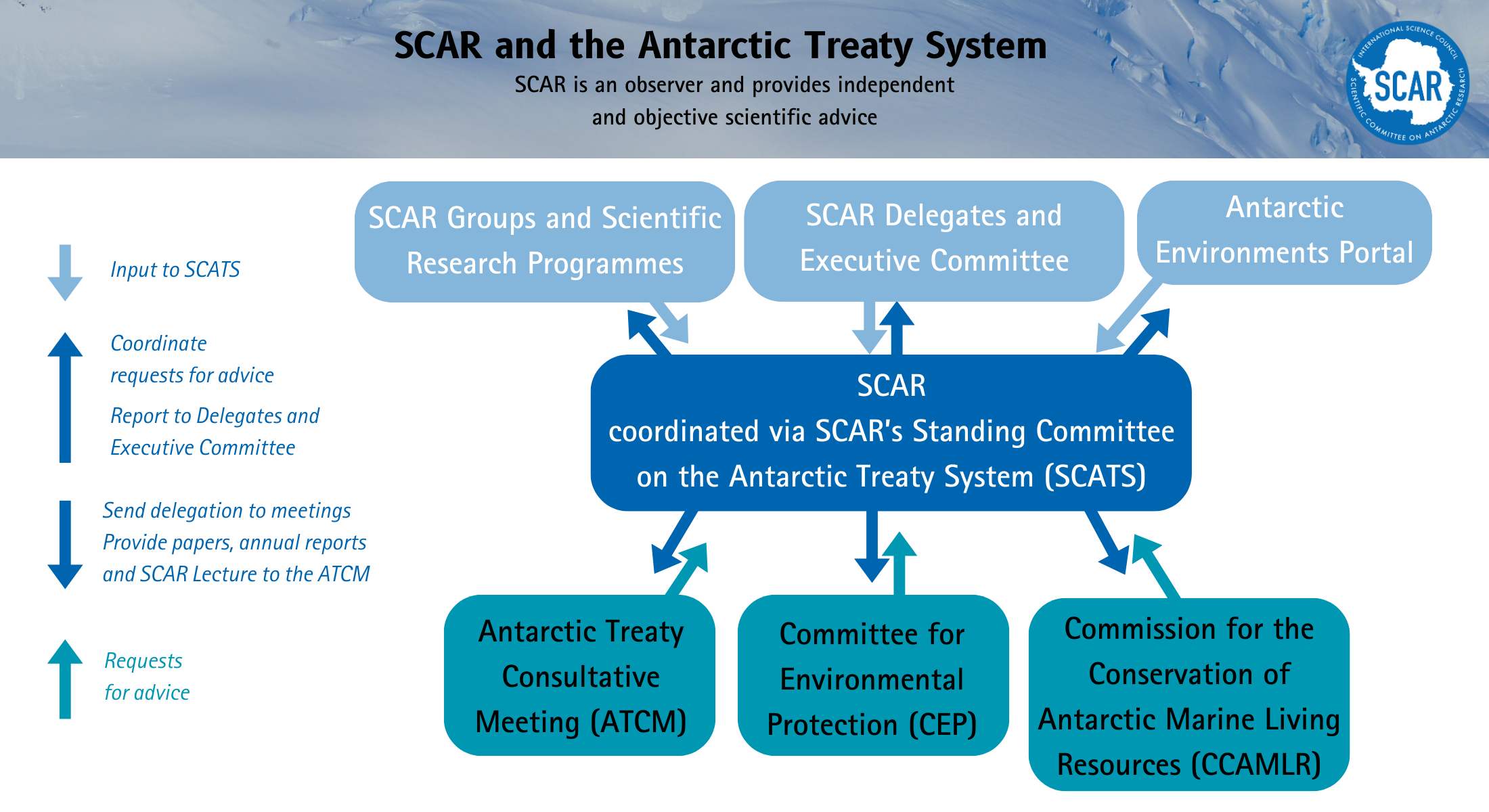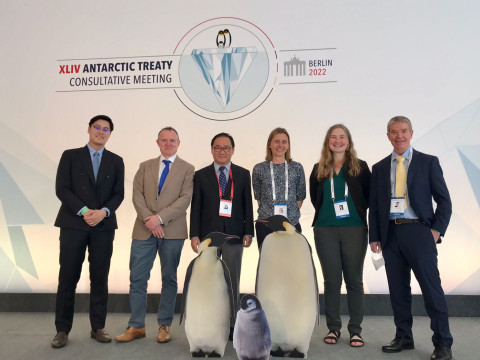The Antarctic Treaty System is the whole complex of arrangements made for the purpose of regulating relations among states in the Antarctic. At its heart is the Antarctic Treaty itself. The original Parties to the Treaty were the 12 nations active in the Antarctic during the International Geophysical Year of 1957-58. The Treaty was signed in Washington on 1 December 1959 and entered into force on 23 June 1961. The Consultative Parties comprise the original Parties and other States that have become Consultative Parties by acceding to the Treaty and demonstrating their interest in Antarctica by carrying out substantial scientific activity there.
The primary purpose of the Antarctic Treaty is to ensure “in the interests of all mankind that Antarctica shall continue forever to be used exclusively for peaceful purposes and shall not become the scene or object of international discord.” To this end it prohibits military activity, except in support of science; prohibits nuclear explosions and the disposal of nuclear waste; promotes scientific research and the exchange of data; and holds all territorial claims in abeyance. The Treaty applies to the area south of 60° South Latitude, including all ice shelves and islands.
The Treaty is augmented by Recommendations adopted at Consultative Meetings, by the Protocol on Environmental Protection to the Antarctic Treaty (Madrid, 1991), and by two separate conventions dealing with the Conservation of Antarctic Seals (London 1972), and the Conservation of Antarctic Marine Living Resources (Canberra 1980). The Convention on the Regulation of Antarctic Mineral Resource Activities (Wellington 1988), negotiated between 1982 and 1988, will not enter into force.
The Antarctic Treaty Consultative Meeting (ATCM) is now held annually. During each ATCM, there is also a meeting of the Committee for Environmental Protection (CEP). The Scientific Committee on Antarctic Research (SCAR) is an Observer at ATCMs and CEPs, and provides independent and objective scientific advice in a variety of fields, particularly on environmental and conservation matters. For more information on the Antarctic Treaty, please visit the Antarctic Treaty Secretariat website.
The Commission for the Conservation of Antarctic Marine Living Resources (CCAMLR) was established by international convention in 1982 with the objective of conserving Antarctic marine life. CCAMLR convenes meetings on a range of topics each year.
SCAR’s Standing Committee on the Antarctic Treaty System (SCATS) is responsible for coordinating SCAT’s advice presented to the ATCM and CEP and to CCAMLR. This is mainly done through the presentation of papers at the meetings. These papers are coordinated by SCATS and involve many scientists from around the world helping to convey the most recent and up-to-date status of research in any particular area.
See the SCAR Library for papers presented to the ATCM & CEP and to CCAMLR.



